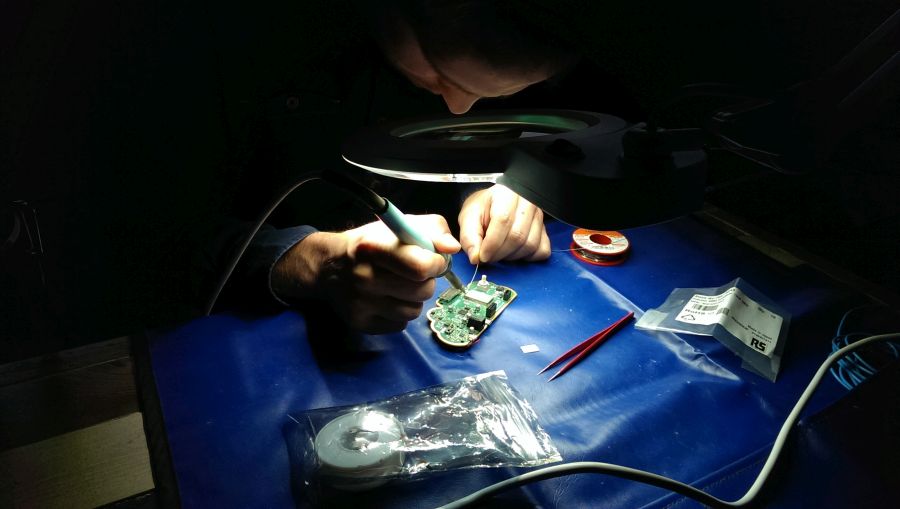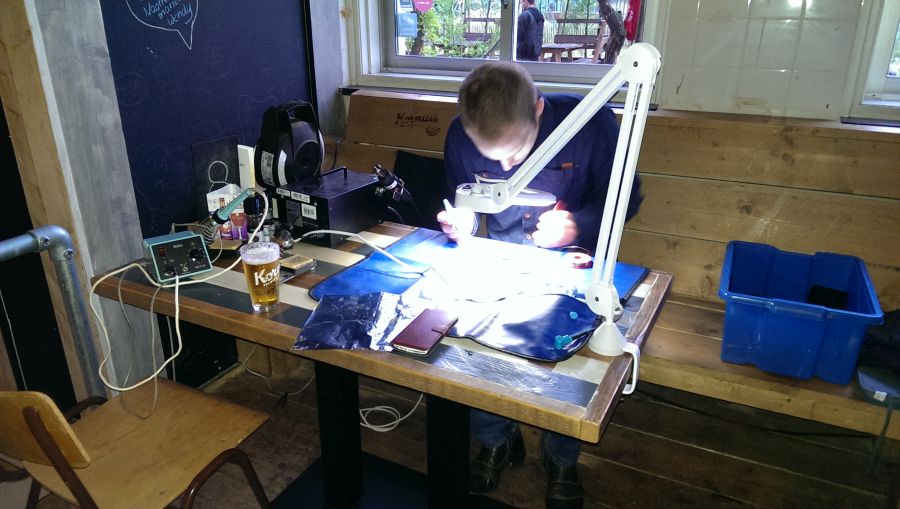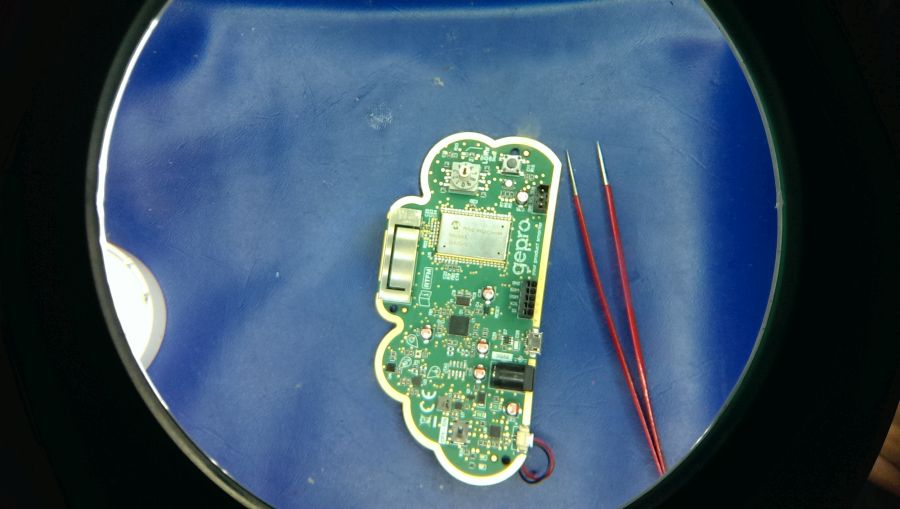Thank you, Batilan. I flashed the sketch and did the setappeui provisioning trick and KISS Lora is sending data to my single channel gateway. But not all features described in dokumentation of KISS seems to work. It takes a long time to show any reaction after turning the rotary switch and sometimes I can’t see any reaction. Any idea what’s going wrong?
Keep in mind that the spreading factor used during transmission influences the distance you can cover to a gateway. The higher the SF the longer the distance. The KISS demo app uses a random SF so the arrival of your packets will vary accordingly.
If you want to experiment and have reproducable results have a look at this part of the code:
uint8_t txsf = 7;
uint8_t rnd = (uint8_t)random(1, 64);
if (rnd == 1 ) {
txsf = 12; // SF12
}
else if (rnd > 1 && rnd < 4 ) {
txsf = 11; // SF11
}
else if (rnd > 3 && rnd < 8 ) {
txsf = 10; // SF10
}
else if (rnd > 7 && rnd < 16 ) {
txsf = 9; // SF9
}
else if (rnd > 15 && rnd < 32 ) {
txsf = 8; // SF8
}
else {
txsf = 7; // SF7
}
Yesterday at the TTN Apeldoorn meetup we successfully modified the KISS gadget.



![]() Any RSSI/SNR figures or coverage comparisons available already?
Any RSSI/SNR figures or coverage comparisons available already? ![]()
Did the modification, now got 10-12dB extra signal on my gateway. Moved C24 (5.6pF) to C23 and added the 10nH inductor to C24.
[moderator: changed part numbering to avoid confusion]
Replace the Letters R for C in message above and i believe these figures … 
What is the footprint of the 10nH inductor and where can I get it?
Thanks, but I’m afraid to crash the gadget when I try to dowload new software. I’ve bad experiences with this “Arduino” alikes.
Now I do my LoRa experiments with the Pycom Lopy. Easy programming in python with the Atom IDE on Linux and direct results as a second kiss-lora-device.
My closest acces point is 8km from my home (open field) is it reasonable to expect a proper connection? If so I will try to fix the antenna, or replace it with a half wave dipole.
Do you have some inductors leftover that you can sell to me?
I have two left that can become yours. So, if you send me a DM…
Yes it is, I have succesfully modidfied my KISS and suddenly it connects to a gateway 9km from my workplace. Be sure to play with the spreadfactor setting to get a consistent link, I use SPF 12.
good news, thanks
I have my KISSLoRa with me in my car and have it configured in the TTNMapper gadget. Today I drove by a gateway and it connected and finally got the OTAA keys near Ede, this was at 1km distance. Later I send some data via a gateway in Arnhem at 5km distance. So larger distances is no problem, but getting connected via OTAA is a bit difficult. I guess it would be best to use ABP on this gadget.
I know the RN2483 try to join on OTAA with SF7, but I never really figured out what their back-out algorithm was. You would think it’s somewhat close to LoRaMac-node, but the RN2483 gives up way too soon for it to have tried several time at every spread factor.
In fact, this topic seems to imply there are no back out strategy for OTAA, and the user is supposed to implement one themselves.
Just in case, try adding “mac set dr 0” before your “mac join”, and check on the TTN console the SF of the JOIN_REQUEST message.
This is dependant on how you control the RN2483. TTN uses by default SF7 for OTAA but you can force OTAA using SF12 if you want. When static ADR can than control the node to go up to the aproperiate SF that fits the propagation path. Settings are done in the TTN library.
I never used the TTN library to control my RN2483s, only the command reference manual… and I never saw anything in it hinting at this behavior, hence my comment.
Furthermore, my experience is that JOIN_REQUEST can be sent at any SF, regardless of the network. The network only controls the ADR (so SF and TX power) if enabled on the node, and the SF/frequency of RX2.
Anyway, the spread factor used for JOIN_REQUEST doesn’t depend on whether ADR is enabled or not.
Dag Jelle,
Ik bezit ook een Kiss-lora van de EA-beurs.
ABP commissioning in Utrecht deed mijn software crashen en lade het programma volgens voorschrift.
Nu dus OTAA.
Lorawan kan ik met een LOS verbinding over 10km bereiken op Texel ten zuiden van Oude Schild.
Een aantal keren heb ik vanaf fort Kijkduin (den Helder) een connect gehad.
Na ca. 15 minuten heb ik bijvoorbeeld de volgende resultaten op het scherm:
frames up 18 reset frame counters
frames down 8
Een aantal dagen heb ik tijdens mijn wandeling gepoogd data te ontvangen temp, humidity, etc., maar tot nu niets.
Mijn vragen: hoeveel frames down moet ik minimaal ontvangen? Wat gaat er mis? Hoeveel minuten moet ik minimaal wachten eer mijn eerste data verschijnt? Doe ik iets fout?
Mvg, Roel,
http://pa0rbc.atspace.com/arduino/arduino.html
mijn excuses dit bericht niet in het Engels te doen om verkeerde formuleringen te voorkomen.
Mine works perfectly after the update but the only things I do not see are the:
“latitude”
“longitude”
“altitude”
The weird thing is that the ttn mapper does just work fine but the Locaton in the Things Network Consol is not shown.
does anyone have an idea?